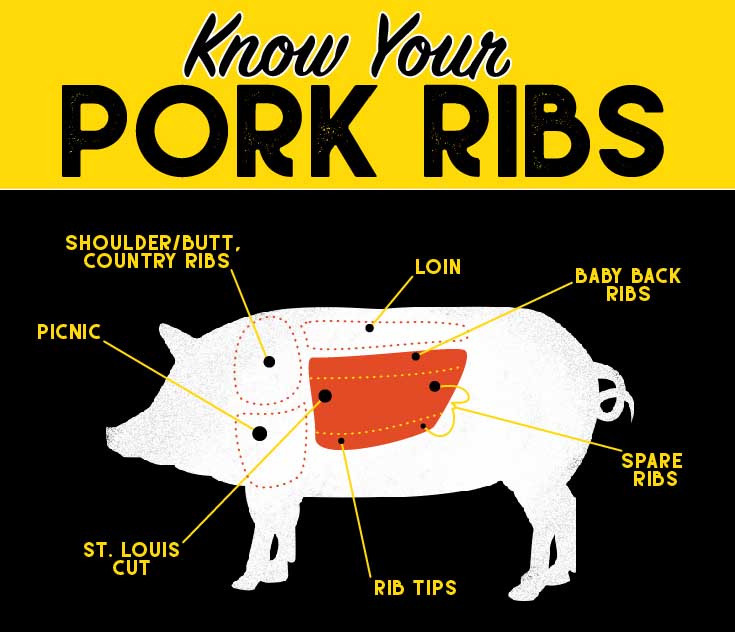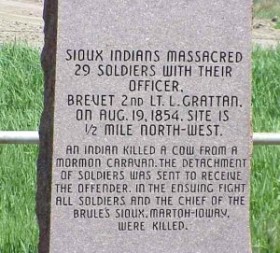September 3 is:
National Tailgating Day
U. S. Bowling League Day
 National Baby Back Ribs Day Baby back ribs (also back ribs or loin ribs) are taken from the top of the rib cage between the spine and the spare ribs, below the loin muscle. They have meat between the bones and on top of the bones, and are shorter, curved, and sometimes meatier than spare ribs. Spare ribs, also called “spareribs” or “side ribs”, are taken from the belly side of the rib cage, below the section of back ribs and above the sternum (breast bone). St. Louis style ribs (or St. Louis cut spare ribs) have had the sternum bone, cartilage, and rib tips removed.
National Baby Back Ribs Day Baby back ribs (also back ribs or loin ribs) are taken from the top of the rib cage between the spine and the spare ribs, below the loin muscle. They have meat between the bones and on top of the bones, and are shorter, curved, and sometimes meatier than spare ribs. Spare ribs, also called “spareribs” or “side ribs”, are taken from the belly side of the rib cage, below the section of back ribs and above the sternum (breast bone). St. Louis style ribs (or St. Louis cut spare ribs) have had the sternum bone, cartilage, and rib tips removed.
National Welsh Rarebit Day (originally called Welsh Rabbit) – a savory cheese sauce served over crusty toasted bread. Despite its name, the dish contains no rabbit meat.
Per foodimentary.com:
- Welsh rarebit or Welsh rabbit is a dish made with a savoury sauce of melted cheese and various other ingredients and served hot, after being poured over slices (or other pieces) of toasted bread, or the hot cheese sauce may be served in a bowl accompanied by sliced, toasted bread.
- Welsh rarebit is typically made with Cheddar cheese, in contrast to the Continental European fondue which classically depends on Swiss cheeses.
- “Eighteenth-century English cookbooks reveal that it was then considered to be a luscious supper or tavern dish, based on the fine cheddar-type cheeses and the wheat breads. Surprisingly, it seems there was not only a Welsh Rabbit, but also an English Rabbit, an Irish and a Scotch Rabbit, but nary a rarebit.”
- To make a Scotch rabbit, toast the bread very nicely on both sides, butter it, cut a slice of cheese about as big as the bread, toast it on both sides, and lay it on the bread.
- To make a Welsh rabbit, toast the bread on both sides, then toast the cheese on one side, lay it on the toast, and with a hot iron brown the other side. You may rub it over with mustard.
- To make an English rabbit, toast the bread brown on both sides, lay it in a plate before the fire, pour a glass of red wine over it, and let it soak the wine up. Then cut some cheese very thin and lay it very thick over the bread, put it in a tin oven before the fire, and it will be toasted and browned presently. Serve it always hot.
- Buck rarebit (Welsh rarebit with an egg). Served with an egg on top, it makes a “buck rabbit” or a “golden buc”.
- Welsh rarebit blended with tomato (or tomato soup) makes a “blushing bunny”.
National Skyscraper Day
After Labor Day, you can honor the construction workers and engineers who built the world’s modern architectural wonders. One European real estate data company defines a skyscraper as at least 330 feet, while in the United States a building starts to qualify around 500 feet.
King William’s War in America ended with the Treaty of Ryswick on September 3, 1697.
Cooch’s Bridge – Skirmish of American Revolutionary war in New Castle County, Delaware where the Flag of the United States was flown in battle for the first time on September 3, 1777.
Treaty of Paris Day, the anniversary of the signing in 1783 of the treaty between the United States and England, ending the Revolutionary War.

Sept 3, 1855: In Nebraska, 700 soldiers under American General William S. Harney avenge the Grattan Massacre by attacking a Sioux village, killing 100 men, women, and children.
Birthday of Louis Henri Sullivan (September 3, 1856), American architect who established the principle that form should follow function.
September 3, 1939, the United Kingdom and France declared war on Germany, following Germany’s invasion of Poland.
Road traffic in Sweden is moved from the left to the right. Dagen H (H day), today mostly called “Högertrafikomläggningen” (“The right-hand traffic diversion”), was the day, 3 September 1967, on which traffic in Sweden switched from driving on the left-hand side of the road to the right. The “H” stands for “Högertrafik”, the Swedish word for “right-hand traffic”. See article for more details.
Qatar became independent. Following Ottoman rule it became a British protectorate until gaining independence in 1971
